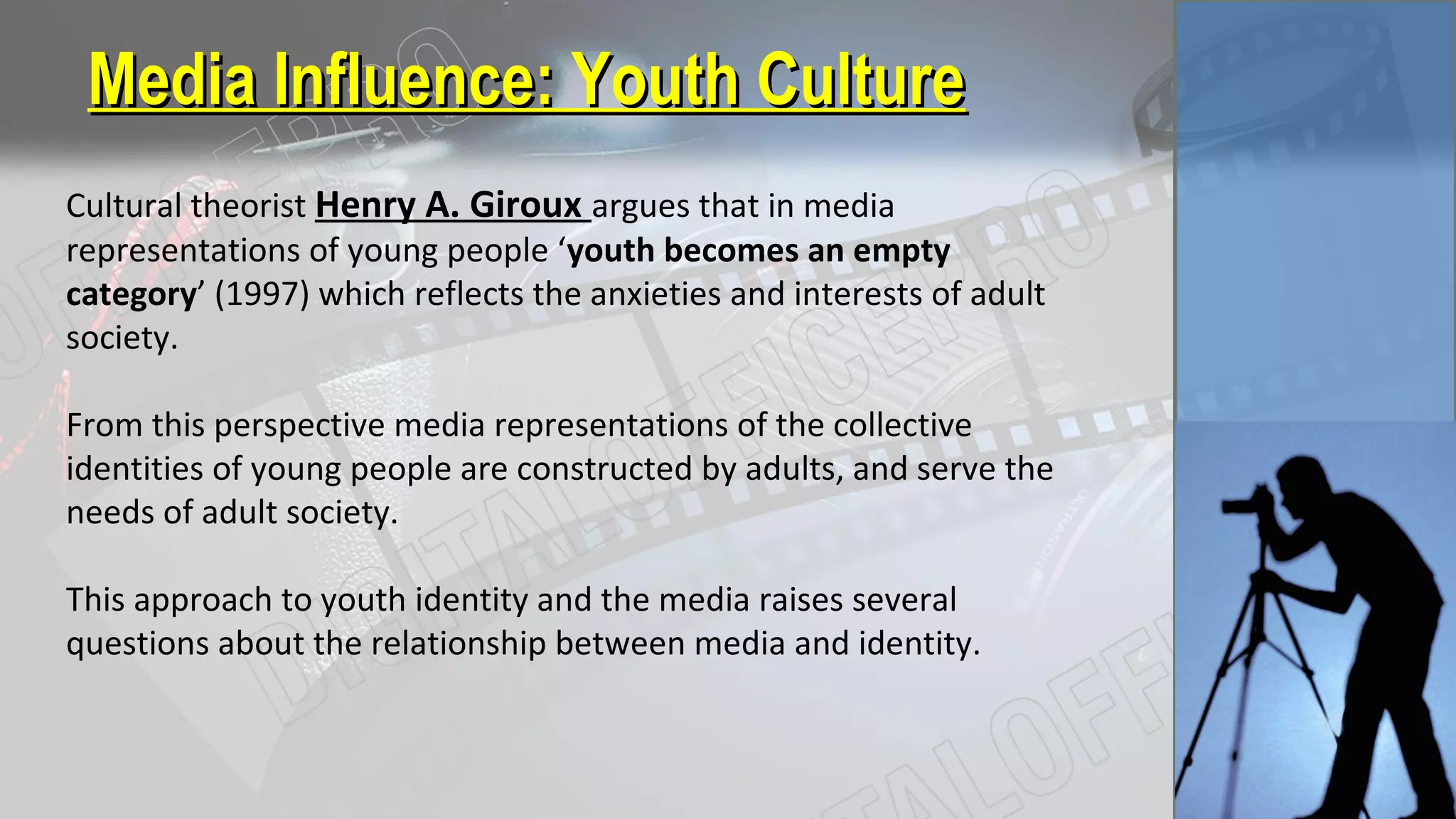The document discusses collective identity and youth culture. It defines collective identity as an individual's sense of belonging to a group that shapes part of their personal identity. Collective identity is gained through social activities and interactions that allow individuals to feel a sense of belonging to something larger than themselves. The document then examines how youth subcultures allow young people to express opposition to dominant society and challenge its norms through styles of dress, music, and behaviors.













![Representation of Youth:Representation of Youth:
‘We live in a decaying age. Young people no longer respect
their parents. They are rude and impatient. They frequently
inhabit taverns and have no self-control.’
Inscribed on Egyptian tomb, 4000 BC
‘I see no hope for the future of our people if they are
dependent on frivolous youth of today, for certainly all youth
are reckless beyond words... When I was young, we were
taught to be discreet and respectful of elders, but the
present youth are exceedingly wise [disrespectful] and
impatient of restraint’
Hesiod, 8th Century BC
‘What is happening to our young people? They disrespect
their elders, they disobey their parents. They ignore the law.
They riot in the streets, inflamed with wild notions. Their
morals are decaying. What is to become of them?’
Plato, 4th Century BC](https://image.slidesharecdn.com/collectiveidentity-youth-170525130633/75/Collectiveidentity-youth-14-2048.jpg)








































